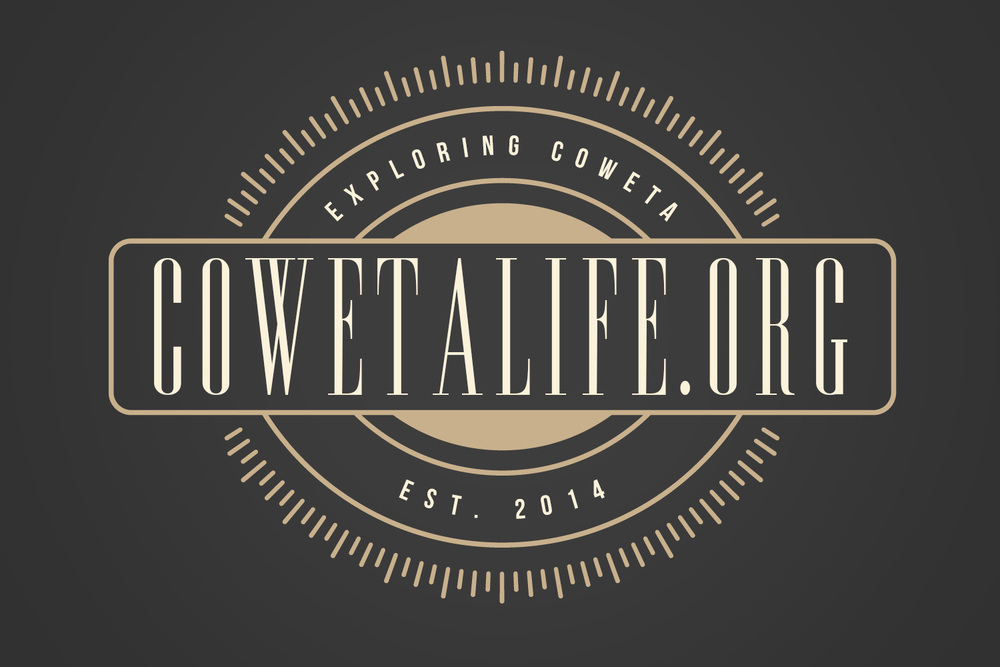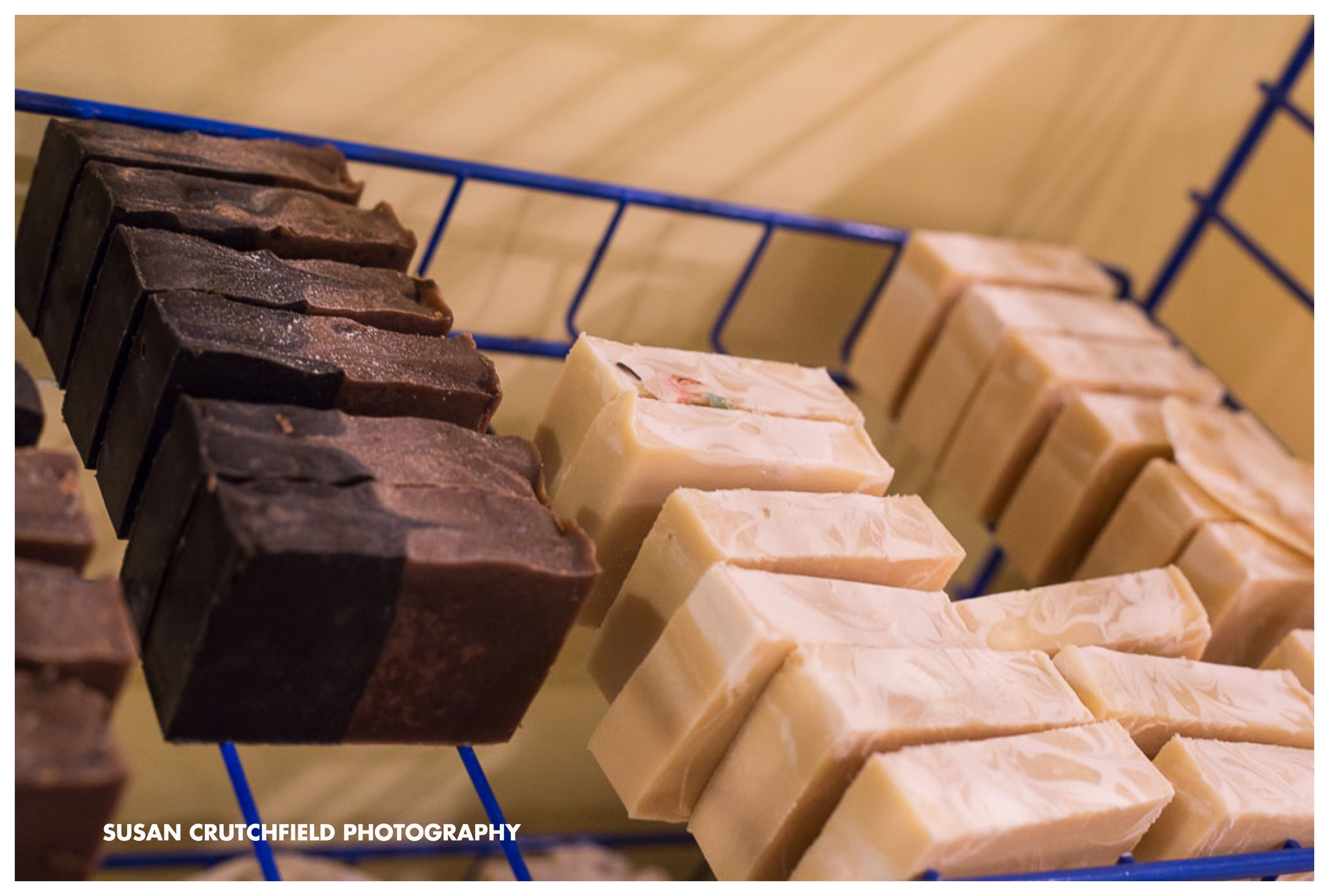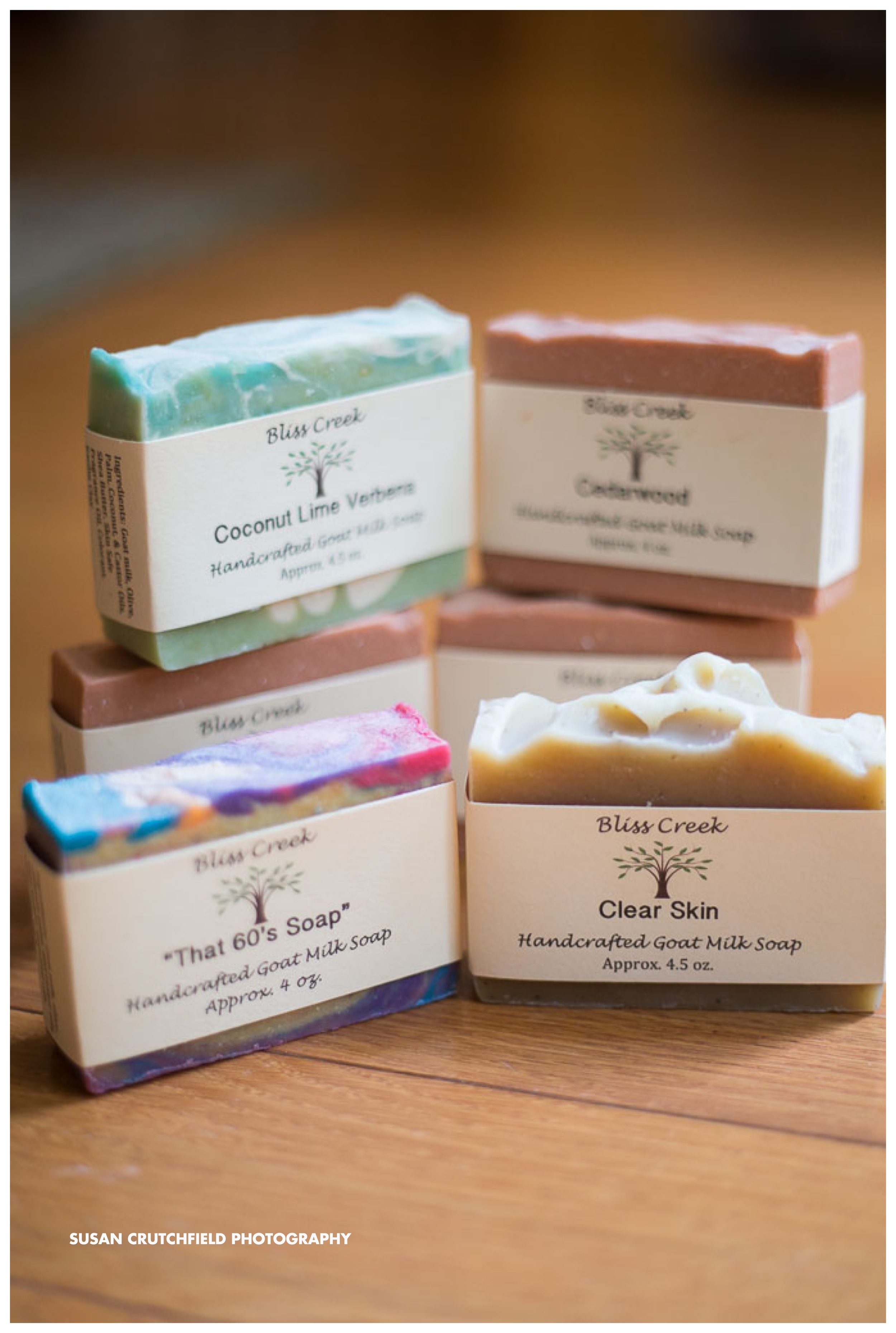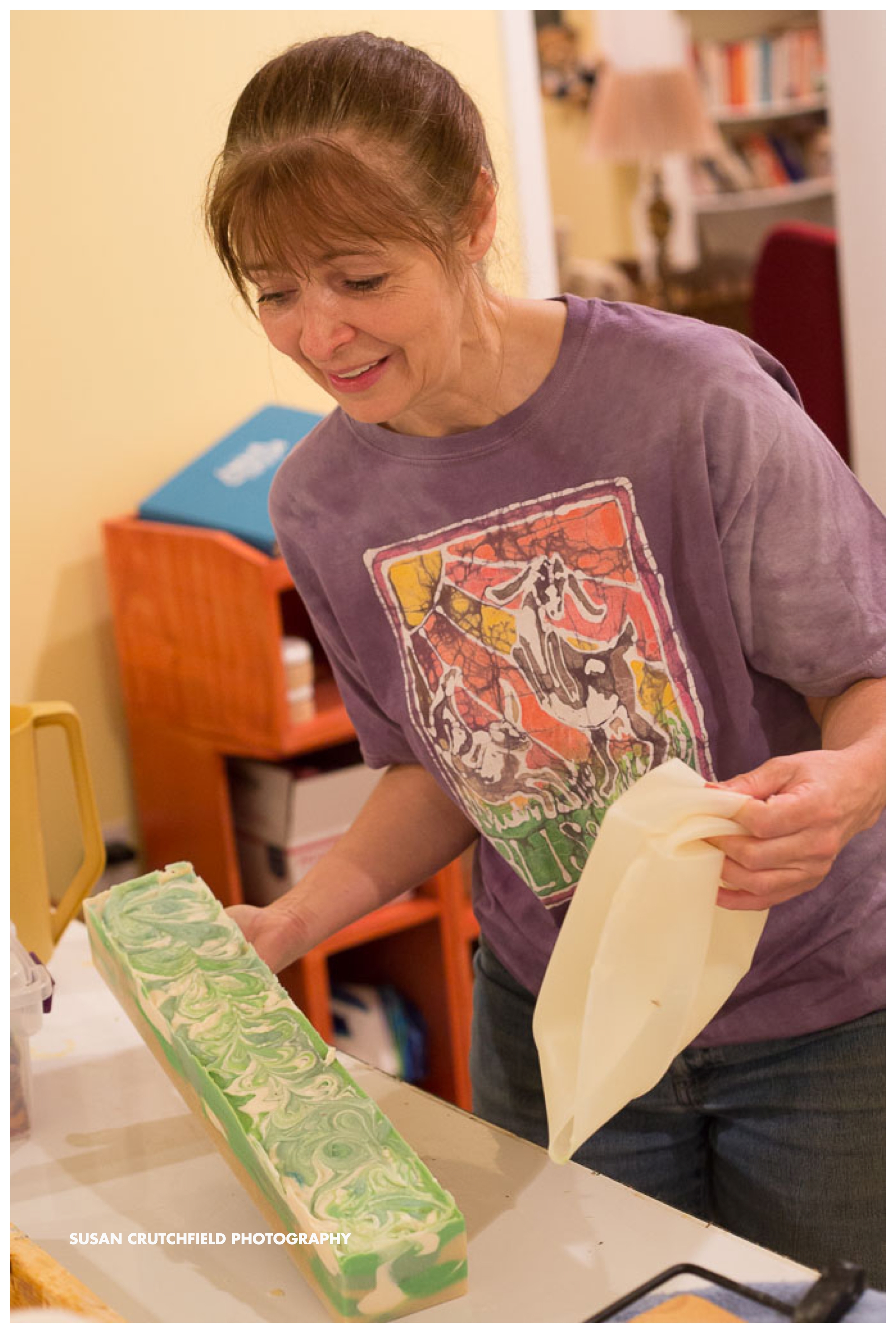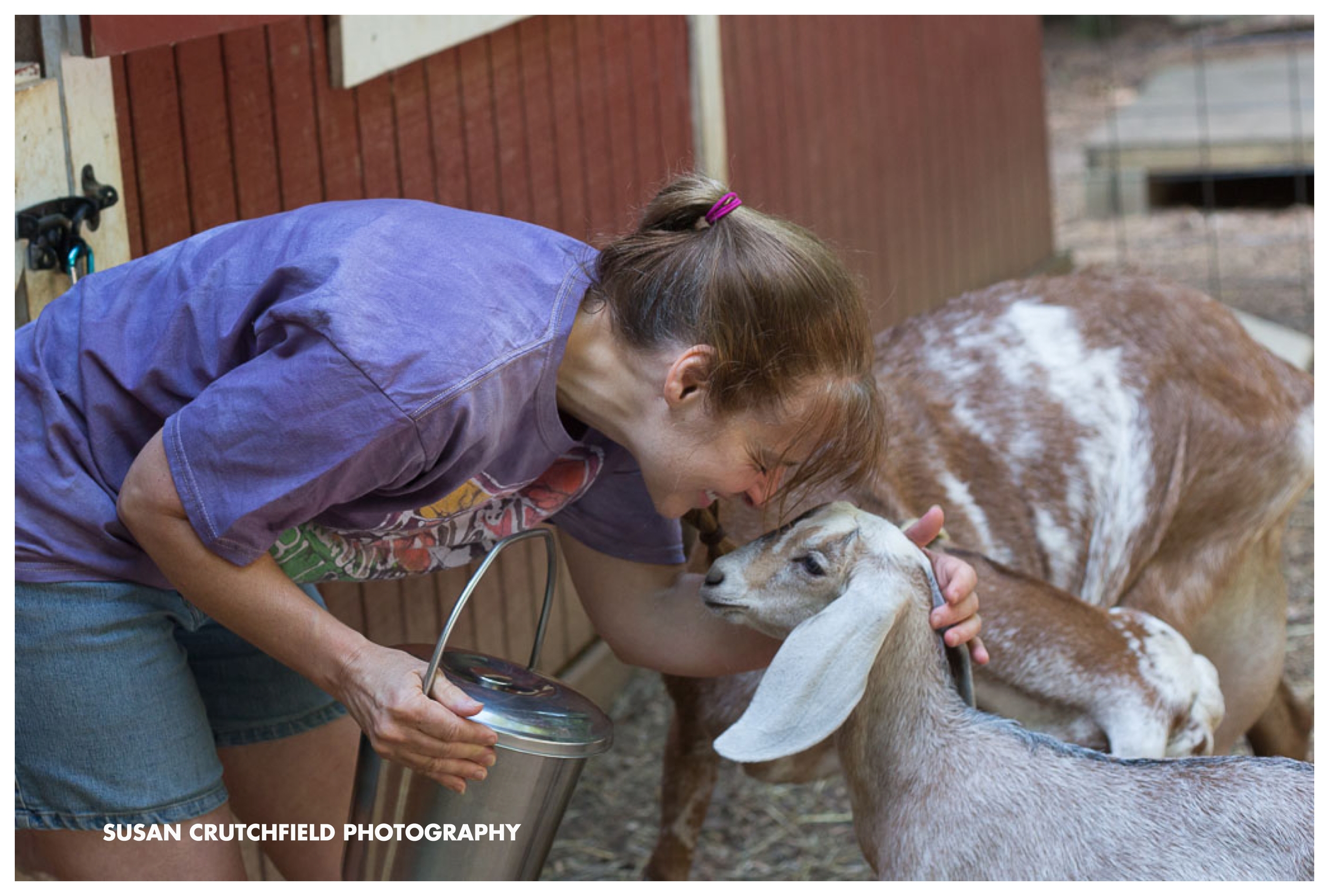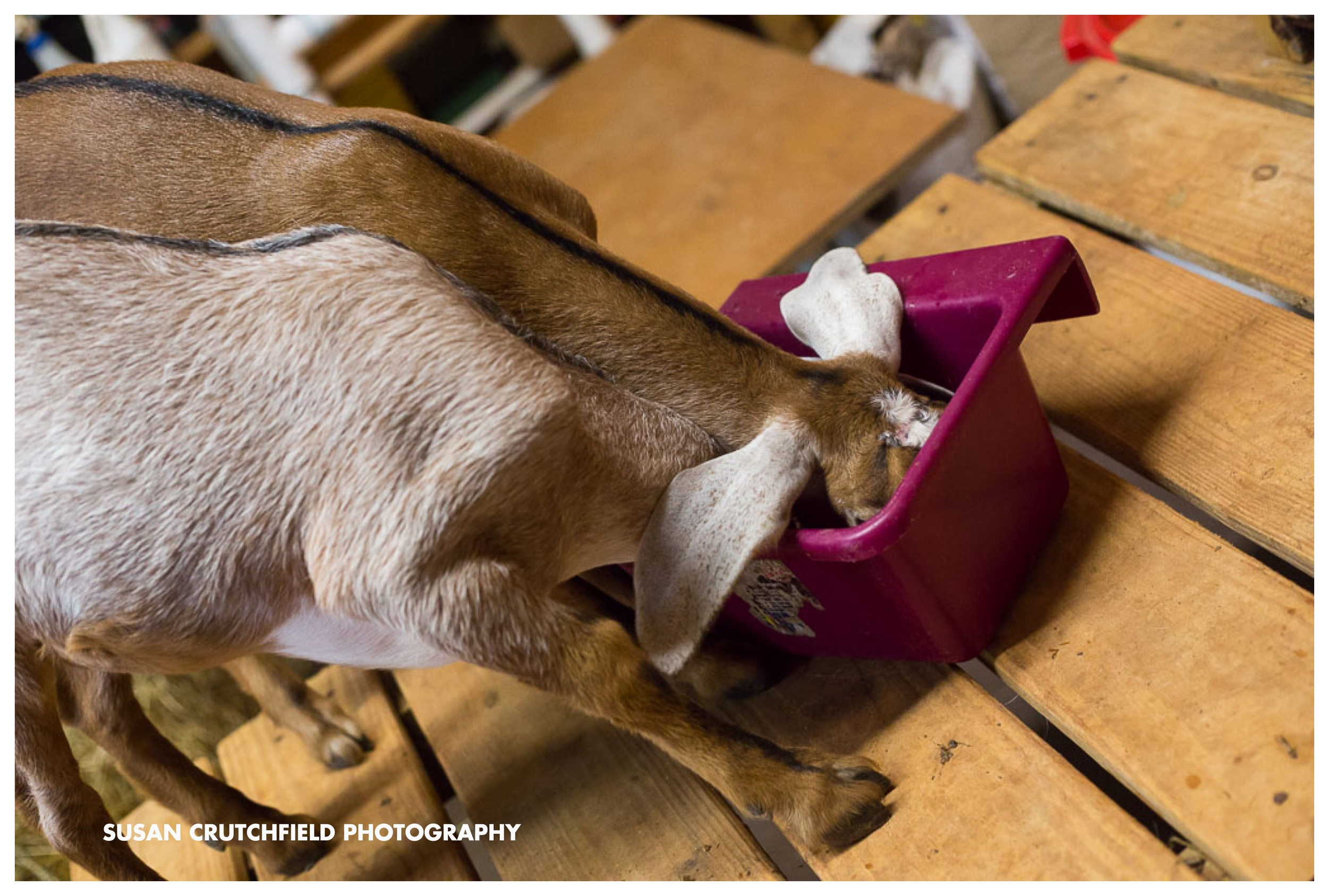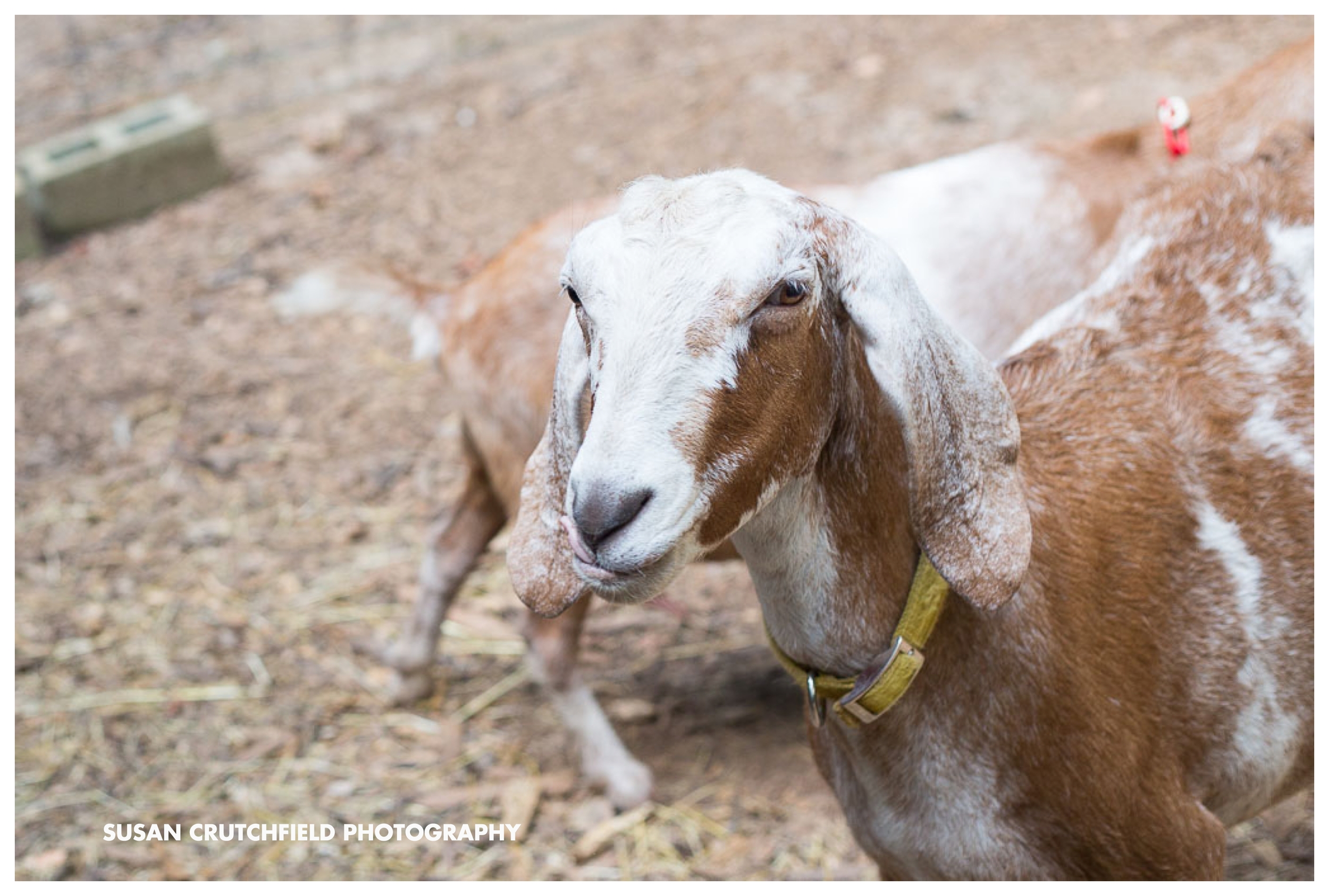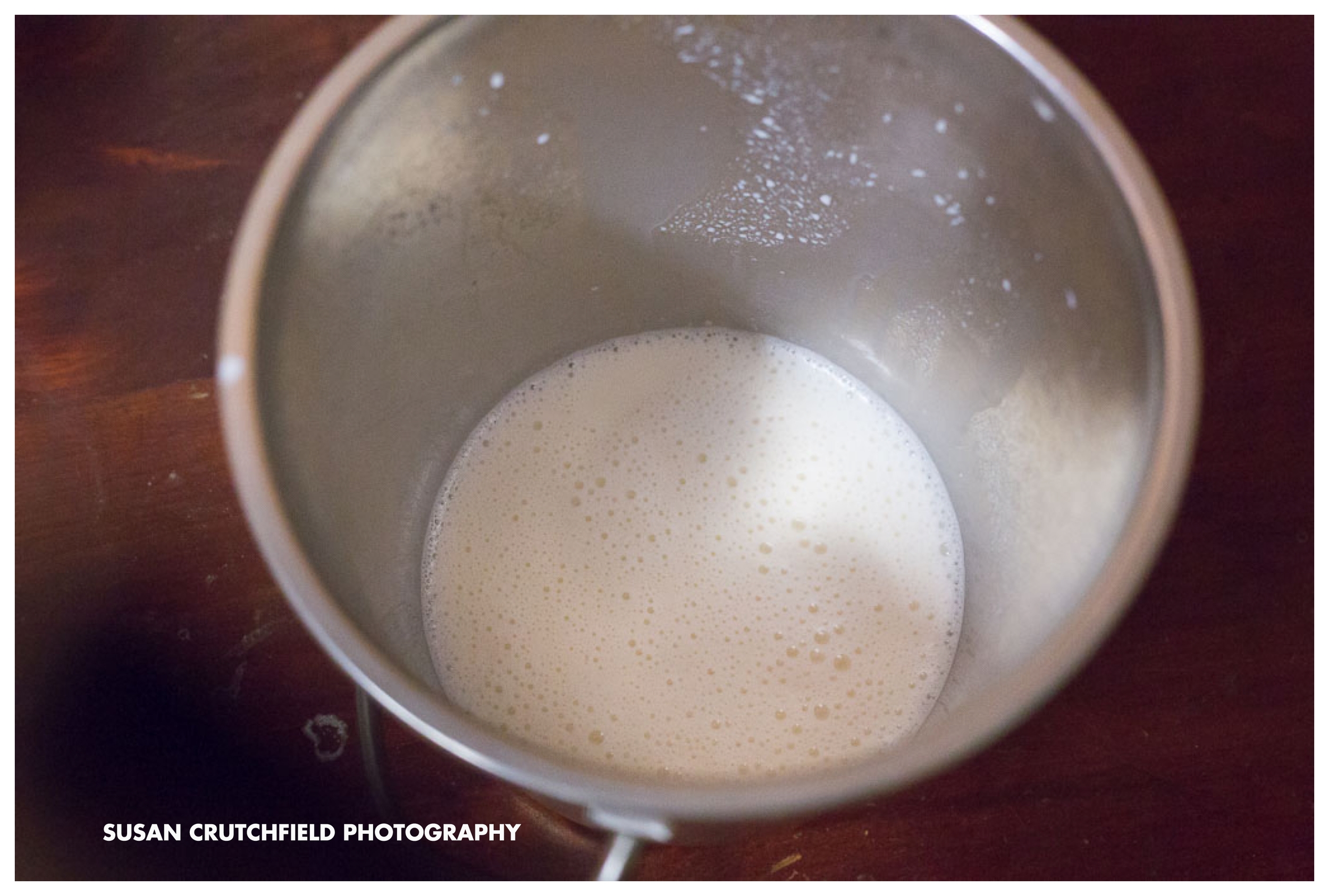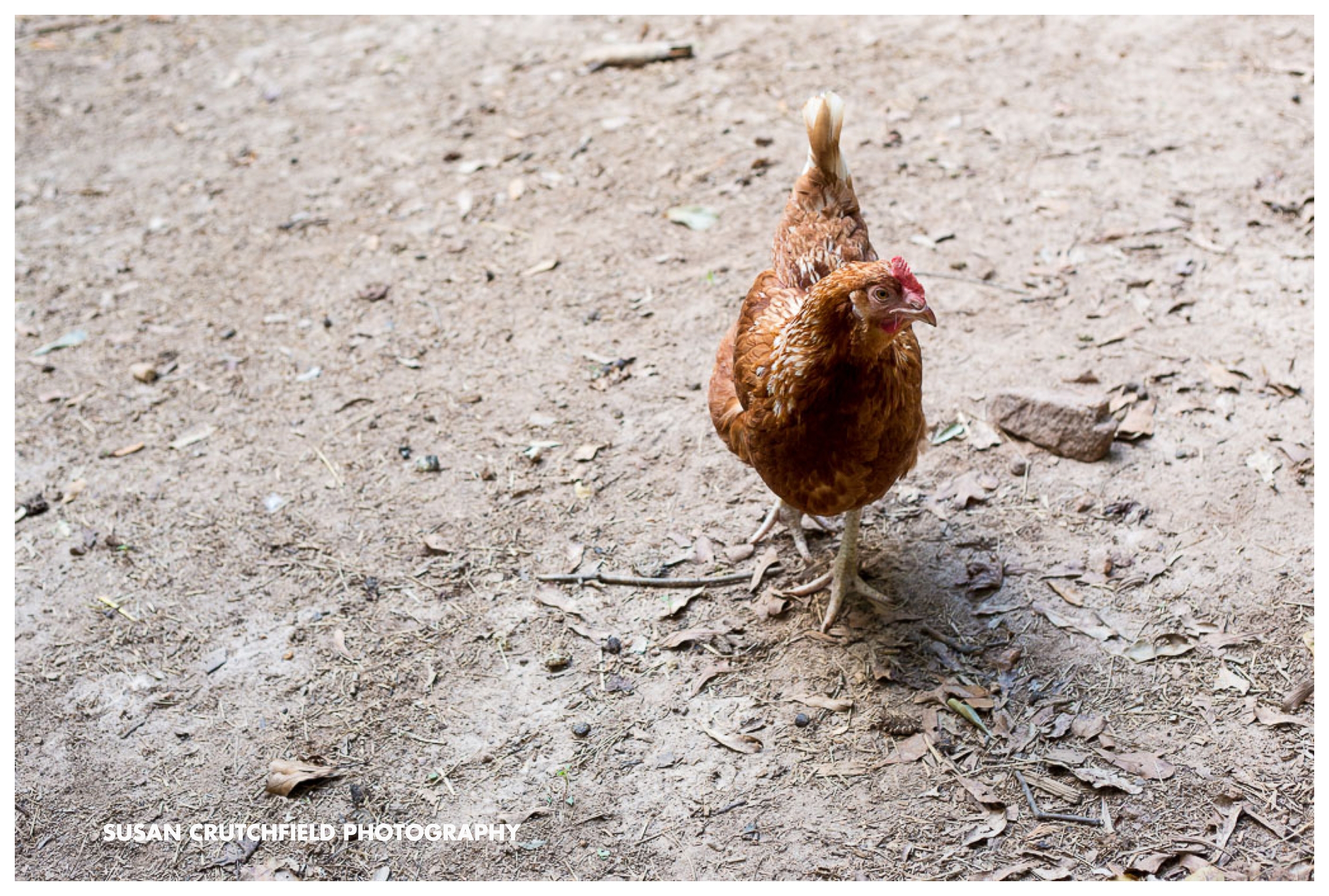PLEASE NOTE COWETA LIFE IS NOT AFFILIATED WITH ANY OF THE PLACES, PEOPLE, OR THINGS WE COVER. PLEASE CONTACT EACH BUSINESS OR PERSON DIRECTLY IF YOU HAVE QUESTIONS. SENDING AN EMAIL THROUGH OUR CONTACT PAGE WILL NOT GET YOU IN CONTACT WITH THE BUSINESS BUT WITH COWETA LIFE. WE ARE NOT ABLE TO REPLY OR FORWARD EMAILS MEANT FOR THE BUSINESSES WE COVER. THANK YOU!
We discovered these hand created goat’s milk bath products at the weekly Newnan farmer’s market on the square.
To Linda Schmidt, the creator of Bliss Creek, soap making is more than a hobby it is a labor-intensive process that she undertakes with love.
She and her husband George are involved in every step of the process from delivering the newborn kid goats to wrapping the finished bars in the Bliss Creek label.
Linda allowed us to come into her home studio to learn about her soap making process and tour Bliss Creek Farms.
Driving up to Bliss Creek Farms, we felt as if we had been transported into a Disney movie. As soon as we stepped out of the car, we were greeted by a throng of friendly farm animals.
Linda is an energetic woman with a warm personality and musical laugh. She led us into her basement studio that she affectionately called ‘the dungeon’. Our noses were immediately met with a bouquet of delicate fragrances.
All the Bliss Creek soap recipes are proprietary blends carefully created and tested by Linda and her family before being made available for purchase.
Bliss Creek Farm soaps are made the old fashioned way with a cold process method.
Lye and one hundred percent goat milk are combined to begin a chemical process in which the molecules are broken apart and reconstituted as a creamy, silky soap.
The cold process of soap making is a precise one. Too much of any ingredient can result in an inferior soap.
As she shows us her digital scale and hand blender, she tells us the process is not unlike baking. The soaps do look good enough to eat!
Beginning with high quality ingredients is also important to producing the best results, so Linda is very careful to source the best oils and butters for her soaps.
Linda began making soap around twenty years ago.
She found handmade soap in a Canadian store and decided she could make it too, so she ordered an instructional book and begin to make soap.
It was only after she began raising goats, that she realized the difference milk made.
Milk makes a silkier soap that is more nourishing to the skin. Goat’s milk has the advantage of having a higher butter fat content and being rich in vitamins and minerals that are good for the skin. Linda learned her craft through much trial and error. She laughingly recounts her first attempt at making goat’s milk soap.
She missed a vital step that accelerated the chemical process and left her house smelling burnt for months.
Learning about the soap process was fascinating, but getting to meet the baby goats was the highlight of our visit.
We firmly believe that your life is incomplete if you have never gotten to hang out with baby goats.
There were four kids ranging in age from three to nine weeks, and they could not have been more adorable.
They are energetic and curious. They love to play and snuggle. We could have watched them play and explore for hours.
Each of the Mini Nubian goats had long, floppy ears and very distinctive personalities. They are extremely intelligent animals. The Bliss Creek goats all know their names and are sometimes a little too clever.
We watched as Clementine opened the door to the milking room by sliding back the bolt and nudging the door open with her nose.
She can also unscrew the lid on the feed jar for an illicit treat.
We were surprised to learn that the goats love being milked.
They get to stand and munch on extra delicious food while they are milked and apparently having extra milk drained from their udders relieves uncomfortable pressure.
We found it amusing that every time someone went in the milking room the goats mobbed the door trying to get in.
We were very excited to get a milking demonstration from Linda.
The goats are thoroughly cleaned and milked. The milk is then immediately strained and chilled.
The free-range chickens wander in and out of the goat pen.
They are very friendly and will come right up to you.
We also found out that the popular conception of goats eating everything from laundry to tin cans is a myth.
They only eat specific things, usually preferring plants, and we learned that they will not touch anything another goat has licked.
Linda and George work very well as a team. She makes the soap and he takes it to the markets to sell it.
You can find Bliss Creek products, including soap, lotion, bugspray, bath salts, tea soak, aromatherapy sprays, free range eggs and goat’s milk, for sale at different markets around the area.
The products are also for sale on the Bliss Creek Farm website.
Follow Bliss Creek on Facebook to keep track of new scents and upcoming markets and keep up to date on current news in goat dairy products.
